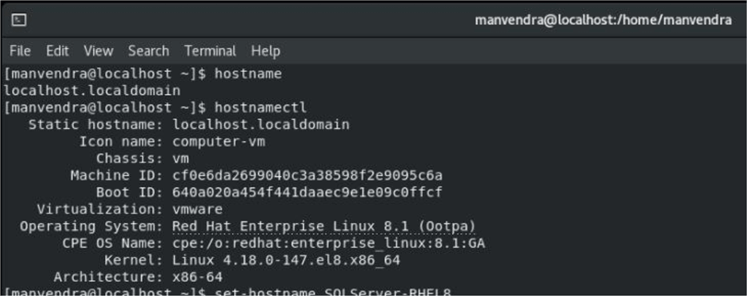

Now, it’s running in an on-prem VMware environment and consists of a frontend VM running on Apache Tomcat on Ubuntu, and a backend VM with MySQL also running on Ubuntu.

It’s an open source Java app that you can find on GitHub and it’s used to host podcasts, as you can see here. Now, first I’ll start by showing you our app called Airsonic. Can you show us how you’d move an open source app then from an on-prem system into Azure? But unless you’ve fully automated that process, you’ll likely save a ton of time using Azure Migrate.

And those will work the same as you’d expect.
Redhat linux vm install#
And of course, you can rebuild or rehydrate everything using automation for the apps you install in VMs running in Azure. Well, Azure Migrate is, as we know, your one-stop shop in Azure for bringing in virtual machines, databases, complete applications, even entire VMware sites into Azure. But, what if you got dozens or hundreds of VMs that constitute your apps, how would I bring those into Azure? Okay, so spinning up a couple of VMs, I think from Azure is pretty straightforward. And whether you’re starting green field or bringing what you’ve already got running through Azure, we’ve got you covered. So we want to make sure when you bring your workloads to Azure, there’s benefit in every step of the way, from onboarding to operation, and you gain more security than you may have had on premises, in your private cloud or in another cloud. And we also work closely with Red Hat for managed services like Azure Red Hat OpenShift, and SUSE with SAP enhancements. Now, starting at the foundational level as I mentioned, we’re working with the leading Linux distros to optimize the kernels for Azure, including tuning the kernel for a Hypervisor, providing updates and patches and performance enhancements for running open source databases. And both platforms have a lot of pros and cons, and we’ve done a ton of work for performance, reliability, manageability, and security to make Azure the best home for running any open source workload. So there isn’t really a concept of a pure Linux shop or a Microsoft shop these days. Well, nearly every business or organization out there is running on multiple platforms. So, if you’re a Linux shop maybe running multiple platforms, what’s the best way to think about running Linux VMs in Azure? So let’s unpack this a bit more starting with your options then that we have for running infrastructure in VMs. Then beyond the workload level, we also contribute back to the upstream Linux and Kubernetes communities that many of the modern and cloud native architectures rely on. And it’s actually more than 60% of our marketplace solutions that run on Linux, and we support open source native PaaS services too.

And we’ve been working with Red Hat, SUSE, Canonical, Flat Car, Elastic and HashiCorp, and open source databases like MySQL, Postgres, Cassandra, MariaDB, and more for years. You might be surprised that more than 50% of the workloads running in Azure are actually running on Linux VMs. So, we wanted to do a show based on Azure support for open source platforms across operating systems, with different Linux distros and also their publishers and open source databases. So, today I’m joined by Matt McSpirit from the Azure engineering team, and also no stranger to Microsoft Mechanics. Up next, we’ll look at Azure as a platform for running your Linux virtual machine and open source database workloads, from your options for how you can lift and shift existing VMs and databases to Azure, and also modernize them using cloud-native approaches. Keep getting this insider knowledge, join us on social: Join us on the Microsoft Tech Community:.You can watch and share valuable content and demos of current and upcoming tech from the people who build it at Microsoft.
Redhat linux vm series#
We are Microsoft’s official video series for IT. Go to Azure migrate and test out a migration at įind the tools to migrate your data stores at To find information related to Linux running on Azure, check out 03:01 - Move an open source app from on-prem into Azureġ0:52 - Repackage your VM to run as a container


 0 kommentar(er)
0 kommentar(er)
